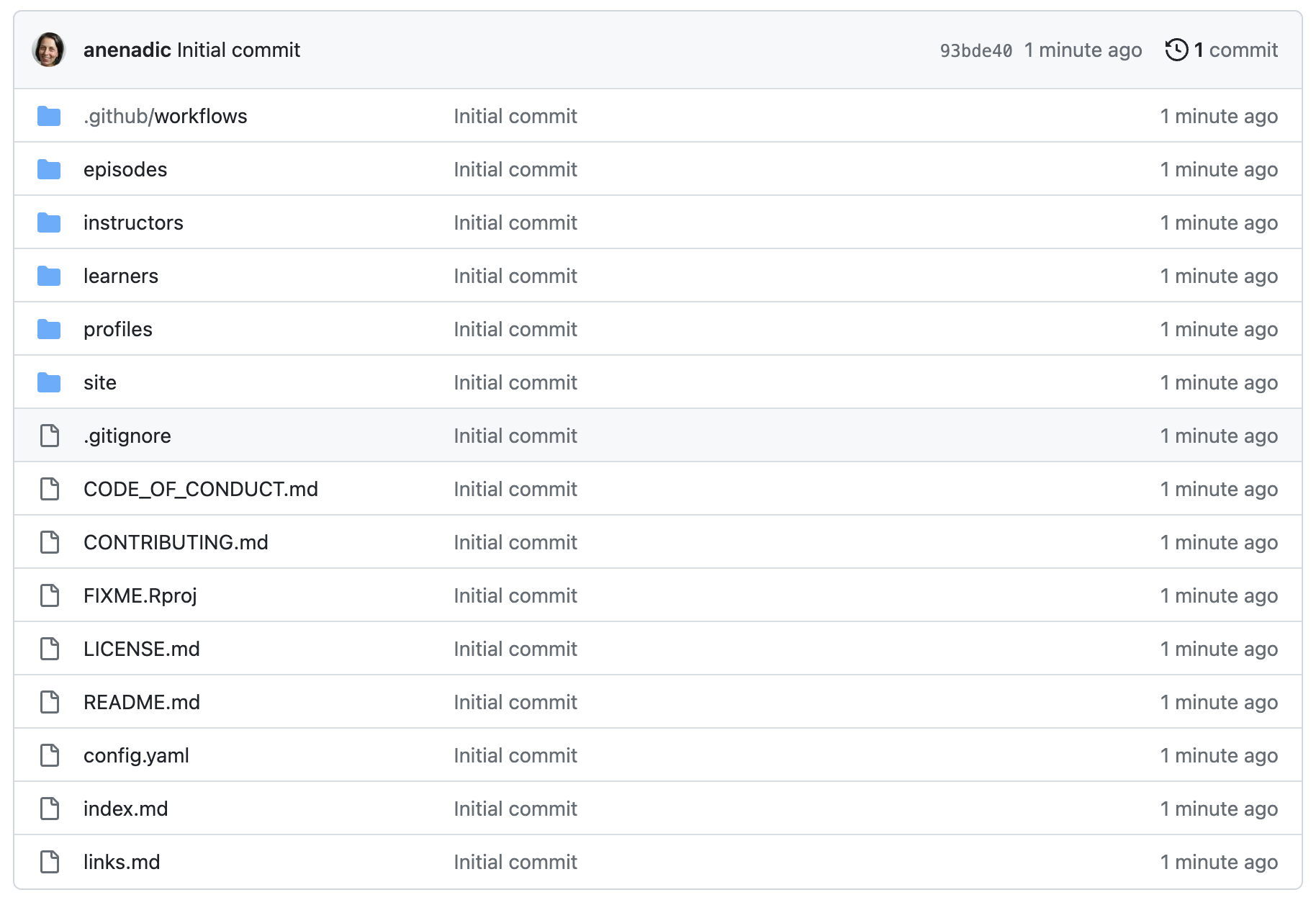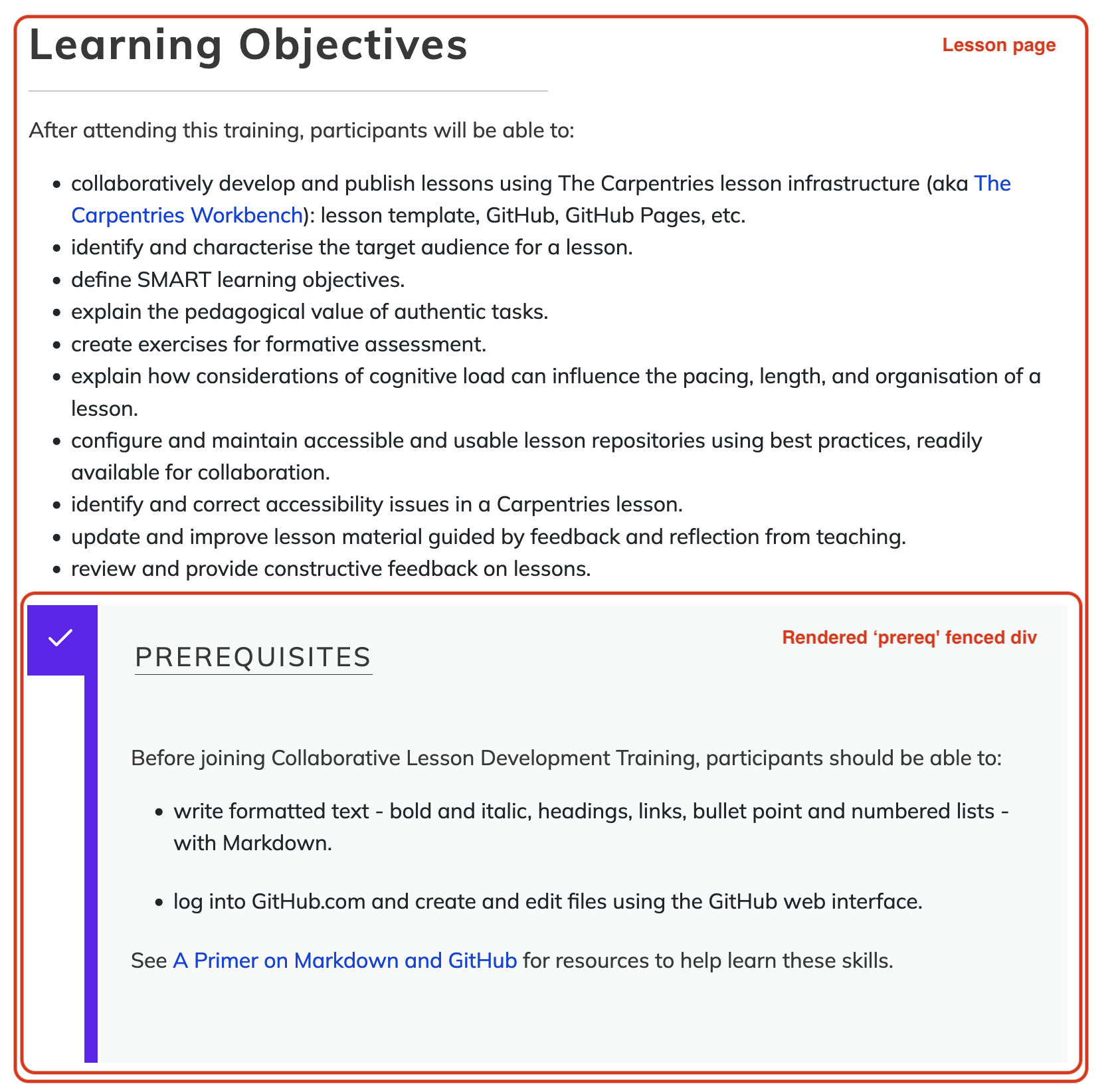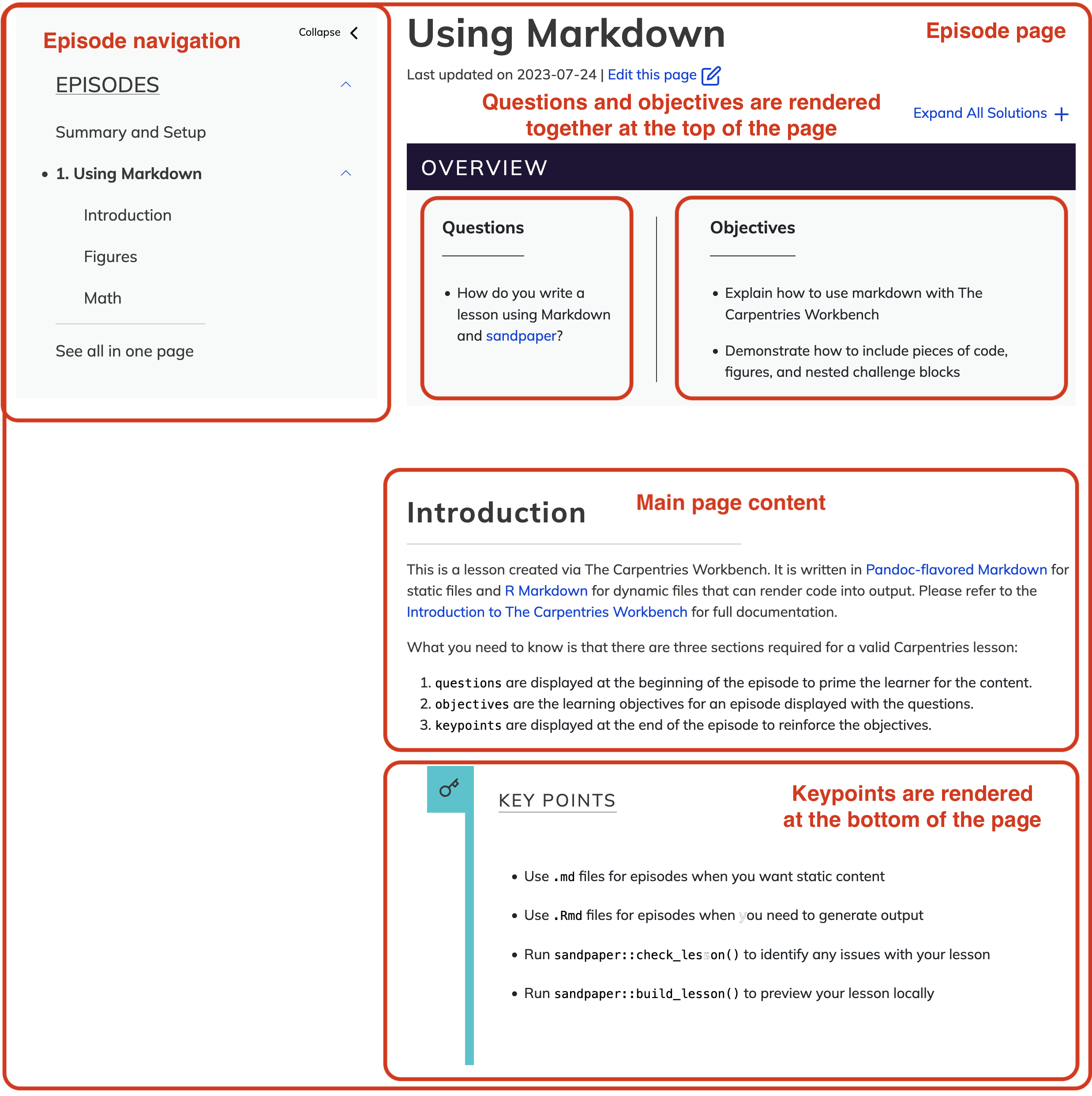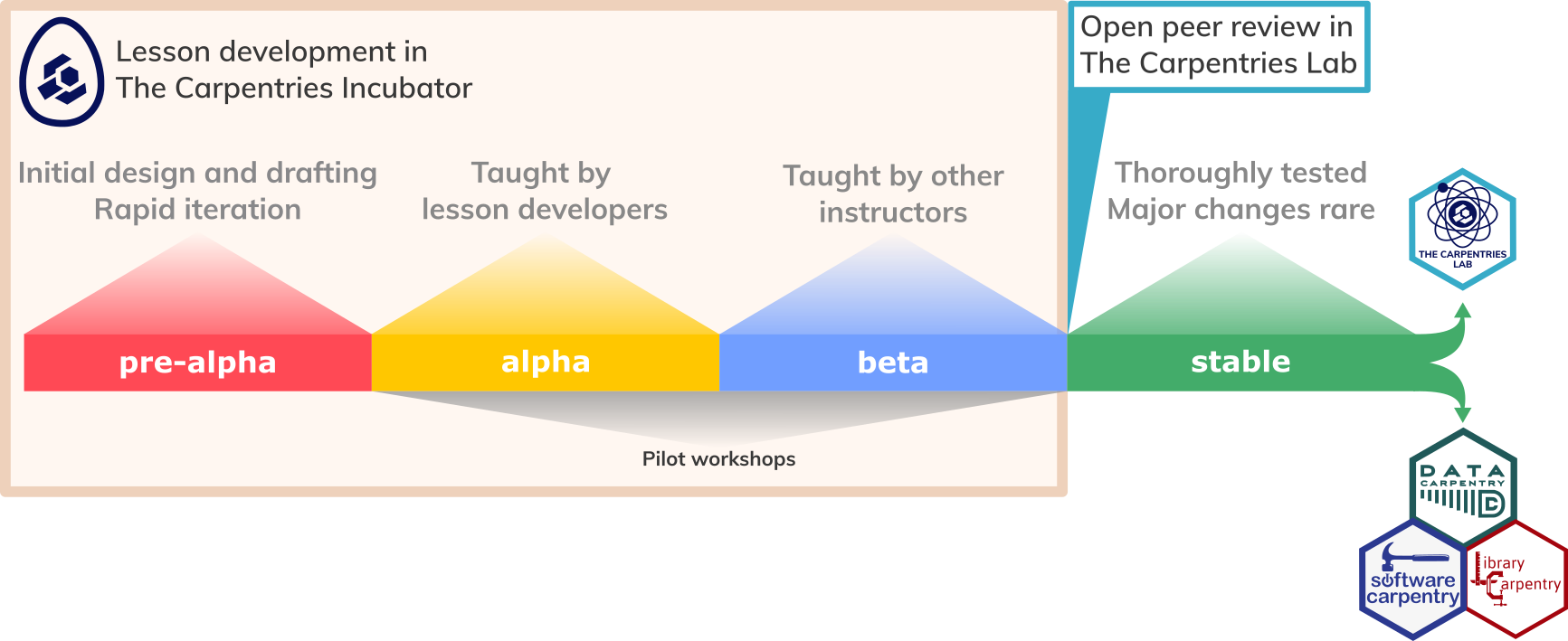Introduction
Lesson Design
Figure 1
An overview of the iterative process of lesson
design and development, adapted from Nicholls’ five phases, that will be
presented in this training.
Figure 2

The life cycle of a lesson
Identifying Your Target Audience
Defining Lesson Objectives/Outcomes
Figure 1
In this episode we will begin the first step of
our iterative design process: defining the skills and knowledge we want
learners to leave with.
Figure 2
Bloom’s taxonomy - a framework for categorising
educational goals, image
from Wikimedia Commons reused under CC BY 4.0 license
Figure 3
The most important elements of a learning
objective.
Example Data and Narrative
Episodes
Designing Exercises
Figure 1
In this episode we move to the second of our
iterative design process: designing assessments to measure learners’
attainment of the objectives we defined previously.
How to Write a Lesson
Figure 1
Now that we have designed assessments to measure
attainment of the objectives set for the lesson, it is time to begin
developing teaching content to give learners the knowledge and skills
they need to succeed in those assessments.
Figure 2

Atmospheric Carbon Dioxide at Mauna Loa
Observatory
The Carpentries Workbench
Figure 1

Directory structure of new lesson repository
created from a lesson template. Note that new repositories created from
the R Markdown lesson template will include an additional
renv/ directory.Adding Lesson Content
Figure 1

A rendered lesson prerequisite fenced div
Figure 2

An example rendered lesson episode page
How we Operate
Figure 1

The life cycle of a lesson, annotated to
indicate the platforms provided for lesson projects at each stage of the
cycle.
Preparing to Teach
Figure 1
In this episode, we will discuss how you can
measure learner progress and gather feedback about the effectiveness of
your content by teaching the lesson.
Figure 2
To complete their Carpentries Lesson Developer
certification, participants in this training must attend a Pilot
Workshop Debrief session and report on the experience of trialling some
of their new lesson content. Participation in a separate GitHub Skill-up
teaching skills and approaches for effective collaboration is optional
but recommended for Lesson Developers.
